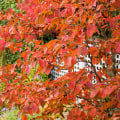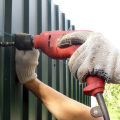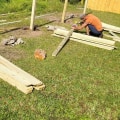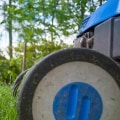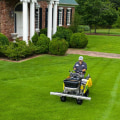Organic lawn care is a method of maintaining a healthy, lush lawn without relying on synthetic chemicals, pesticides, or artificial fertilizers. Instead, it focuses on natural processes, soil health, and environmentally friendly practices to promote strong, resilient grass that thrives in harmony with its ecosystem. The goal of organic lawn care is not just to create an attractive lawn but also to improve soil fertility, encourage biodiversity, and reduce harmful runoff that can contaminate waterways. By choosing organic methods, homeowners contribute to a healthier environment while also ensuring that their lawn is safe for children, pets, and wildlife. Unlike conventional lawn care, which often relies on quick-fix solutions that may lead to long-term soil degradation, organic approaches build sustainable, long-lasting health for both the grass and the underlying soil.
The Role of Soil Health in Organic Lawn Care
One of the fundamental principles of organic lawn care is maintaining and improving soil health. Healthy soil provides essential nutrients for grass, allowing it to grow thick and strong without the need for synthetic fertilizers. Organic lawn care begins with soil testing to assess nutrient levels, pH balance, and soil composition. Based on these results, homeowners can amend their soil using natural materials such as compost, manure, and organic mulch. Adding compost enhances microbial activity, introduces beneficial bacteria, and improves soil structure, creating an environment where grassroots can establish deep, healthy systems. Additionally, aeration plays a crucial role in organic lawn care, as it helps break up compacted soil, allowing water, air, and nutrients to reach the root zone more effectively.
Natural Fertilizers and Weed Control
Unlike synthetic fertilizers, which often deliver an immediate but short-lived boost of nutrients, organic fertilizers release nutrients slowly and improve soil fertility over time. Natural fertilizers such as bone meal, fish emulsion, seaweed extracts, and composted manure provide a balanced mix of essential nutrients while enhancing the soil’s ability to retain moisture and support beneficial microorganisms. Weed control in organic lawn care does not involve the use of herbicides that may harm beneficial insects and disrupt the natural ecosystem. Instead, organic methods focus on preventive measures, such as proper mowing techniques, overseeding, and maintaining the right grass height to outcompete weeds. Mulching grass clippings can also act as a natural weed suppressant while returning valuable nutrients to the soil. Hand-pulling weeds, using vinegar-based herbicides, and applying corn gluten meal as a pre-emergent weed control solution are additional organic strategies to manage unwanted plants without resorting to chemicals.
The Importance of Water Conservation
Watering is another critical component of organic lawn care, and proper irrigation techniques ensure that lawns receive adequate moisture without wasting water. Organic lawns thrive when watered deeply and infrequently, encouraging roots to grow deeper into the soil, making them more drought-resistant. Using rain barrels, drip irrigation, or soaker hoses helps reduce water waste while keeping the lawn hydrated in an efficient manner. In regions with hot and dry climates, like Arizona, maintaining an organic lawn can be particularly challenging due to water restrictions. Homeowners in such areas may opt for alternative landscaping options that complement their organic approach, such as drought-resistant plants or integrating elements like Phoenix Block Wall Fence to create a visually appealing and functional outdoor space without excessive reliance on water-intensive grass.
Encouraging Biodiversity and Beneficial Insects
An organic lawn is more than just grass; it is an ecosystem that supports beneficial insects, pollinators, and soil organisms. Encouraging biodiversity helps create a self-sustaining lawn that naturally resists pests and diseases. Instead of using chemical pesticides that kill both harmful and beneficial insects, organic lawn care relies on companion planting, introducing native plants, and fostering habitats for pollinators like bees and butterflies. Ladybugs, nematodes, and predatory beetles help control common lawn pests such as aphids and grubs without the need for toxic chemicals. Additionally, promoting bird activity in the yard can help naturally manage insect populations. By allowing nature to take its course, organic lawn care creates a balanced environment where the lawn remains healthy without artificial intervention.
Mowing and Lawn Maintenance Best Practices
How a lawn is mowed significantly impacts its overall health. Organic lawn care recommends keeping grass at an optimal height—typically around three inches—rather than cutting it too short. Taller grass shades the soil, retains moisture, and prevents weed seeds from germinating. Using a sharp mower blade ensures clean cuts that reduce stress on the grass, promoting faster healing and stronger growth. Grass clippings should be left on the lawn whenever possible, as they decompose and return valuable nutrients to the soil. Avoiding mowing during the hottest part of the day and adjusting the mowing schedule based on seasonal growth patterns further supports the principles of organic lawn care.
The Long-Term Benefits of Organic Lawn Care
Transitioning to organic lawn care may take time, but the long-term benefits far outweigh the initial efforts. A naturally maintained lawn becomes more resilient to drought, pests, and disease over time, reducing the need for expensive chemical treatments and frequent interventions. Additionally, eliminating synthetic fertilizers and pesticides protects local water sources from harmful runoff and preserves beneficial microorganisms that support soil health. Homeowners who commit to organic lawn care not only create a safer environment for their families and pets but also contribute to a more sustainable future. By focusing on soil health, natural fertilization, proper watering, biodiversity, and responsible maintenance practices, organic lawns thrive in a way that conventional lawns simply cannot match.
Conclusion
Organic lawn care is a sustainable, eco-friendly approach that nurtures soil health, reduces chemical dependence, and promotes long-term resilience. By using natural fertilizers, implementing water-efficient irrigation methods, and encouraging beneficial insects, homeowners can achieve a vibrant, lush lawn without harming the environment. While it may require a shift in traditional lawn care routines, the benefits of organic methods include improved soil quality, reduced maintenance costs, and a safer outdoor space for people and wildlife. As more homeowners recognize the value of sustainable landscaping, organic lawn care continues to grow in popularity as a responsible and effective way to maintain a beautiful yard.

